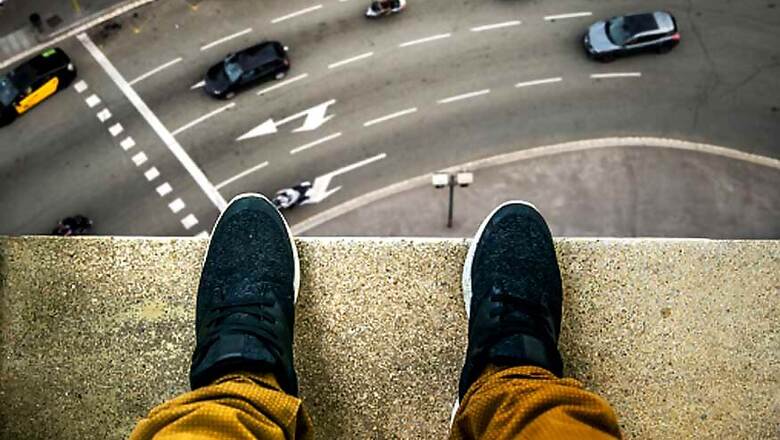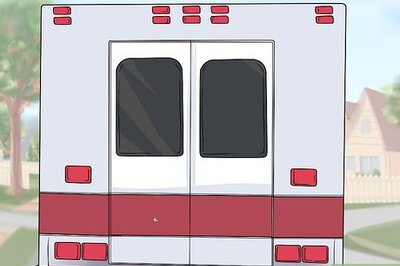
views
Delhi: Her father was out for work and her mother was visiting a neighbour when Anjali Gupta, a Class VI student of a government school, entered her home near Sarojini Nagar after playing with some children in the south Delhi locality. About an hour later, Pinki Gupta returned, only to find her nine-year-old daughter hanging from a ceiling fan with a noose fashioned from a rope and a towel.
On an average, one child commits suicide every four days in India’s capital, according to government data. And experts admit the real picture is probably much worse.
It’s been more than a year since Anjali Gupta’s death on June 28, 2018. After being investigated by the south district police, the case was transferred to the southwest district. And yet, there are no leads, no answers as to why the little girl hanged herself. Police refused to comment further.
Anjali is now just another statistic – one of at least 449 minors who have taken their own lives in Delhi in the last five years.
One of the highest number of cases of underage suicide came from the district of Dwarka, where at least 140 minors under the age of 18 killed themselves from 2014-18. About 70 cases of suicide by minors were reported from south Delhi itself. A total of 87 cases were reported from north-west Delhi while 68 cases were recorded by police in south-west Delhi.
The numbers emerged in Delhi Police’s response to an RTI plea from Delhi-based lawyer Gaurav Bansal. He has also filed a petition in the Supreme Court for the creation of suicide-prevention police cells in all states and union territories.
While the reasons were not standard across cases in Delhi, many seemed to have been triggered by poor performance in school examinations, tensions with friends or acquaintances, disputes with family or quarrel with lovers.
Bansal, himself a parent, said the data shocked him but not as much as the apathy of some sections of the police. “Many of the districts inside Delhi did not submit their response. Some did not maintain records, others wouldn't provide it,” he said.
In 2016, government think tank NITI Aayog in collaboration with the World Bank released a health index report that covered statistics regarding health from all states and union territories of India (except West Bengal, which did not submit records). However, the report remained silent on mental health figures, citing “non-availability of acceptable quality data on an annual basis”. This indicates that areas like suicide and mental health continue to be neglected by politicians, states and authorities.
India accounted for 36.6 per cent of global suicide deaths among women in 2016. The figure was 24.3 per cent for men. In a report titled “Gender differentials and state variations in suicide deaths in India: the Global Burden of Disease Study 1990–2016” that was published in the medical journal Lancet, researchers found that suicide rates in individual states as well as the nation have drastically increased since 1994 to 2016.
Studying age-specific suicide death rates revealed that women aged 15-29 years had a higher susceptibility for suicide (as with women above 70). According to Dr Nimesh Tiwari, director of the Delhi-based Institute of Human Behaviour and Allied Sciences (IHBAS) in Shahdara, adolescence is the ripest time for the onset of various psychiatric disorders as psycho-social changes.
“In the 15-25 age group, individuals are the most prone to psychiatric disorders like schizophrenia and unipolar depression,” Dr Desai told News18. “However, in most cases, early symptoms of mental distress are often dismissed as simply stress or part of growing up.”
Changes and conflicts that are inherent to adolescence and puberty, hormonal changes, adjustment and cohesion with family, friends and other social groups, often leads to mental distress.
“The causes for suicide vary. Yes, in most cases, the deceased was under some pressure, be it from a lover, or from school, or from some personal failure,” deputy commissioner of police (south district) Vijay Kumar told News18. He added that because of the diversity of cases, it was hard to point out if there was any geographical factor that affected the data pattern and trends.
A volunteer who works with a Pune-based NGO’s national suicide helpline Connecting said they get a lot of calls from adolescents from across the country. While the reasons vary, she noted a spike in adolescent distress calls during exam times.
The Bharatiya Janata Party government’s Mental Healthcare Act 2017 decriminalised suicide and mandated states to “plan, design and implement public health programmes to reduce suicides and attempted suicides in the country”. In keeping with this, the State Mental Health Authority (SMHA) was set up in some parts, including Delhi.
However, cases of suicides keep piling up. Much of the data is incomplete as not all police stations maintain records of suicides by minors and some did not share it in response to Bansal’s RTI plea.
While several studies have often linked suicides with economic distress, Dr Desai of IHBAS, who is also part of the SMHA Delhi, said it was not quite as simple. Much of the problem was in the lack of recognition of symptoms of mental stress and illness that could lead to suicide. The apathy is equally prevalent in economically empowered sections. For example, non-fatal deliberate self-harm (DSH) is a common characteristic among adolescents across socio-economic sectors. The most common example of such cases are the wrist-slashers. In almost all instances, such behaviour is a cry for help, say experts.
With a change in the country’s socio-economic structure, personality disorders have been on the rise. And the doctor felt that this was inevitable, as he pointed out the high incidence of such disorders for decades in developed Western countries like the US.
The way forward is multi-pronged. “Educational institutions, medical fraternity as well as authorities like the police, all need to work together for preventing suicide,” said Delhi’s health secretary and head of its SMHA, Sanjeev Khirwar, adding that efforts were being made by the Aam Aadmi Party government to ensure this.



















Comments
0 comment